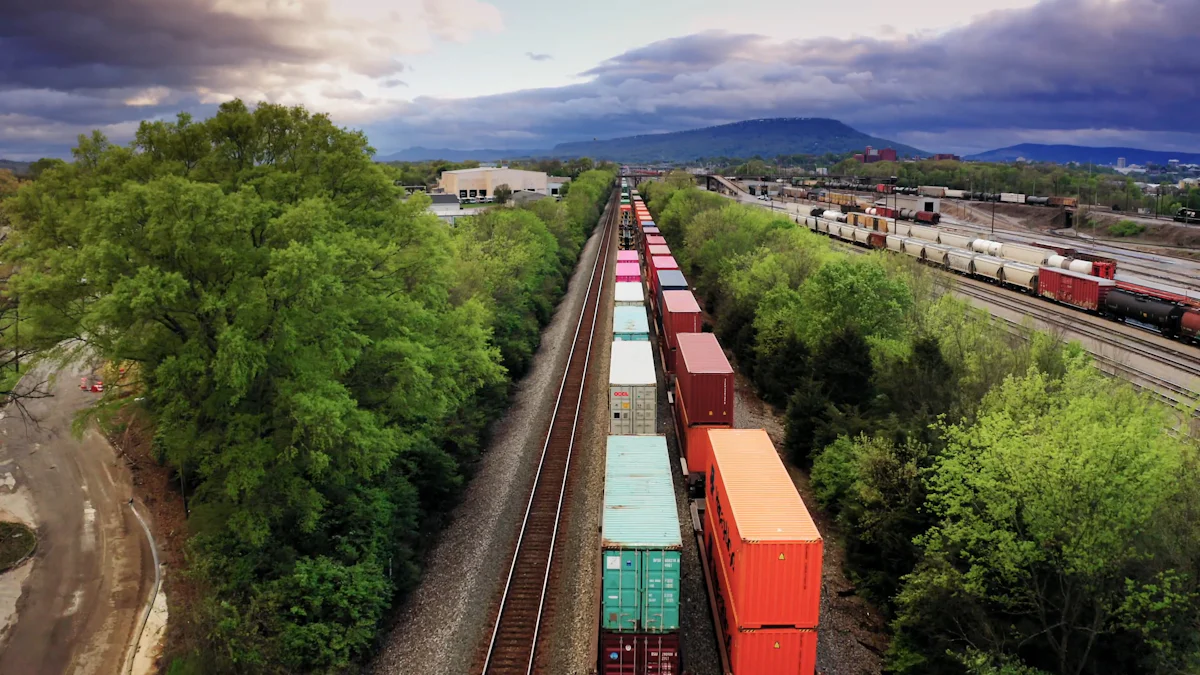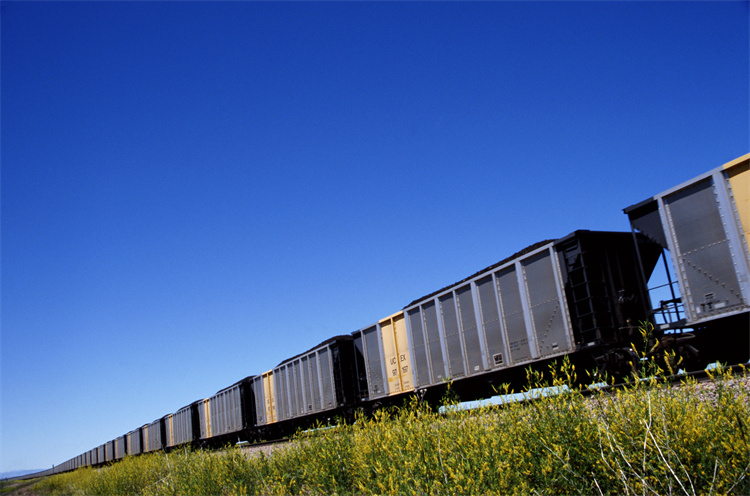Analyzing the China-Europe Railway Express and Its Global Trade Influence

The China-Europe Railway Express has transformed global rail transport. This extensive network connects over 30 countries in Eurasia, facilitating the movement of goods across vast distances. The railway's annual freight train services surged from 1,702 to over 17,000, with an impressive average annual growth rate of 39.5%. In May 2024, the railway achieved a record by moving 186,000 twenty-foot equivalent units of cargo. This growth highlights the railway's critical role in global trade, supporting cross-border transportation and regional circulation.
The China-Europe Railway Express: An Overview

Historical Background of the China-Europe Railway Express
Origins and Development
The China-Europe Railway Express began operations in 2011. This initiative aimed to establish a reliable rail link between China and Europe. The railway connected over 223 cities in Europe and more than 100 cities in Asia. The railway provided a faster and cheaper alternative to sea and air transport. The development of this railway marked a significant milestone in global trade logistics.
Key Milestones
The China-Europe Railway Express achieved several key milestones since its inception. Trade volumes between China and Europe increased significantly. Trade grew from 4 trillion yuan in 2013 to 7.42 trillion yuan in 2022. Governments introduced policies to improve rail infrastructure. These policies focused on standardizing procedures and enhancing connectivity. Government support played a crucial role in the railway's growth.
Current Operations of the China-Europe Railway Express
Routes and Destinations
The China-Europe Railway Express operates an extensive network of routes. These routes cover vast distances across Eurasia. The railway connects major economic hubs in China with key cities in Europe. The network facilitates the movement of goods efficiently. The railway serves as a strategic overland alternative to seaborne trade.
Volume and Capacity
The China-Europe Railway Express has witnessed remarkable growth in volume and capacity. In 2023, the railway operated 17,000 trains. These trains transported 1.9 million TEUs of goods. The railway's capacity continues to expand with increasing demand. The service stabilizes global supply chains by offering a reliable transport solution.
Economic Implications
Impact on Trade Between China and Europe
Trade Volume Increase
The China-Europe Railway Express has significantly boosted trade volume between China and Europe. This railway service provides a reliable and efficient transport solution, which has led to a substantial increase in the movement of goods. Businesses have capitalized on the reduced transit times and cost-effective nature of rail transport. The railway's ability to transport large volumes of goods efficiently has made it an attractive option for traders. The increased trade volume has strengthened economic ties between China and European countries.
Economic Partnerships
The China-Europe Railway Express has fostered robust economic partnerships between China and Europe. The railway's efficiency and reliability have encouraged more businesses to engage in cross-border trade. These partnerships have resulted in mutual economic benefits for both regions. The railway has facilitated the exchange of goods, services, and technology, enhancing economic cooperation. Governments have supported these partnerships by investing in infrastructure and streamlining customs procedures. The enhanced connectivity has paved the way for long-term economic collaboration.
Influence on Global Supply Chains
Cost Efficiency
The China-Europe Railway Express offers significant cost efficiency compared to other transport modes. The railway reduces transportation costs by up to 50% compared to air freight. This cost advantage makes it a preferred choice for businesses seeking affordable logistics solutions. The railway provides a balanced solution between affordability and speed, making it an ideal option for various industries. The cost savings have allowed companies to allocate resources to other critical areas, enhancing overall business operations.
Time Savings
The China-Europe Railway Express delivers considerable time savings over traditional sea routes. The railway provides a faster alternative for transporting goods across continents. Businesses benefit from reduced transit times, which improves supply chain efficiency. The timely delivery of goods ensures that companies can meet market demands promptly. The railway's speed and reliability have made it a vital component of global supply chains. The time savings have contributed to stabilizing supply chains, especially during periods of disruption.
Logistical Challenges
Infrastructure and Connectivity
Rail Network Expansion
The China-Europe Railway Express has experienced significant growth. This growth requires continuous expansion of the rail network. Expansion ensures that the railway can accommodate increasing freight volumes. Rail network expansion involves constructing new routes and upgrading existing ones. These efforts aim to enhance connectivity between China and Europe. Efficient rail networks reduce transit times and improve service reliability. The expansion also supports economic integration across regions.
Intermodal Transport Solutions
Intermodal transport solutions play a crucial role in the efficiency of The China-Europe Railway Express. These solutions involve the seamless transfer of goods between different modes of transport. Rail, road, and sea transport work together to ensure smooth logistics operations. Intermodal solutions reduce handling times and minimize delays. The integration of various transport modes enhances the railway's competitiveness. Businesses benefit from improved supply chain efficiency and reduced costs. Intermodal solutions support the railway's role as a key player in global trade.
Regulatory and Political Issues
Cross-Border Regulations
Cross-border regulations present challenges for The China-Europe Railway Express. Different countries have varying customs procedures and regulatory requirements. These differences can lead to delays and increased operational costs. Harmonizing cross-border regulations is essential for smooth railway operations. Standardized procedures facilitate efficient customs clearance and transshipment processes. Governments play a vital role in implementing regulatory changes. These changes aim to improve service quality and connectivity.
Political Relations
Political relations influence the operations of The China-Europe Railway Express. Positive relations between countries enhance cooperation and support railway growth. Political tensions can impact the railway's efficiency and competitiveness. Diplomatic efforts focus on strengthening economic ties and resolving conflicts. Governments invest in infrastructure and streamline customs procedures to support the railway. Political stability ensures the railway's continued success in facilitating global trade.
Environmental Impact

Sustainability Considerations
Carbon Footprint Reduction
The China-Europe Railway Express plays a crucial role in reducing carbon emissions. Rail transport produces fewer CO2 emissions compared to air and sea transport. Trains offer a greener alternative for long-distance freight. The railway reduces carbon emissions by an estimated 30% compared to air freight. This reduction highlights the environmental benefits of choosing rail over other modes of transportation. The eco-friendly nature of rail transport helps mitigate the environmental impact of global trade.
Comparison with Other Transport Modes
The China-Europe Railway Express offers a more sustainable option compared to other transport modes. Air and sea transport contribute significantly to greenhouse gas emissions. Trains provide a cleaner alternative for transporting goods across continents. Railroads play an important role in reducing overall greenhouse gas emissions. The railway's efficiency and lower emissions make it a preferred choice for environmentally conscious businesses. The comparison underscores the importance of rail transport in achieving sustainability goals.
Future Prospects
Innovations in Green Logistics
The China-Europe Railway Express continues to innovate in green logistics. New technologies enhance the efficiency and sustainability of rail transport. Innovations focus on reducing energy consumption and minimizing environmental impact. The railway adopts advanced systems to monitor and optimize operations. These efforts aim to further decrease the carbon footprint of rail transport. The commitment to green logistics positions the railway as a leader in sustainable transportation.
Long-term Environmental Goals
The China-Europe Railway Express aligns with long-term environmental goals. The railway supports global efforts to reduce greenhouse gas emissions. Strategic initiatives focus on enhancing the sustainability of rail transport. The railway aims to achieve significant reductions in carbon emissions over time. Long-term goals include increasing the use of renewable energy sources. The pursuit of these objectives reinforces the railway's role in promoting environmental sustainability.
The China-Europe Railway Express has become a pivotal force in global trade. This railway network connects major economic hubs across Asia and Europe, reshaping trade dynamics. The railway's impact extends beyond transportation, influencing economic partnerships and boosting trade volumes. The railway offers significant cost efficiency and time savings, enhancing global supply chains. Environmental benefits include reduced carbon emissions, aligning with sustainability goals. The future of the China-Europe Railway Express promises continued innovation and strategic importance in global trade networks.
See Also
Exploring the Influence of International Trade Policies on Economies
Addressing Globalization's Supply Chain Growth Obstacles
The Significance of Supply Chains in Global Trade
